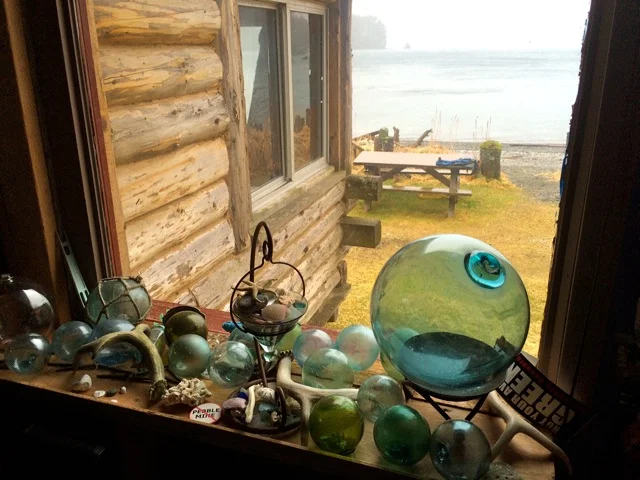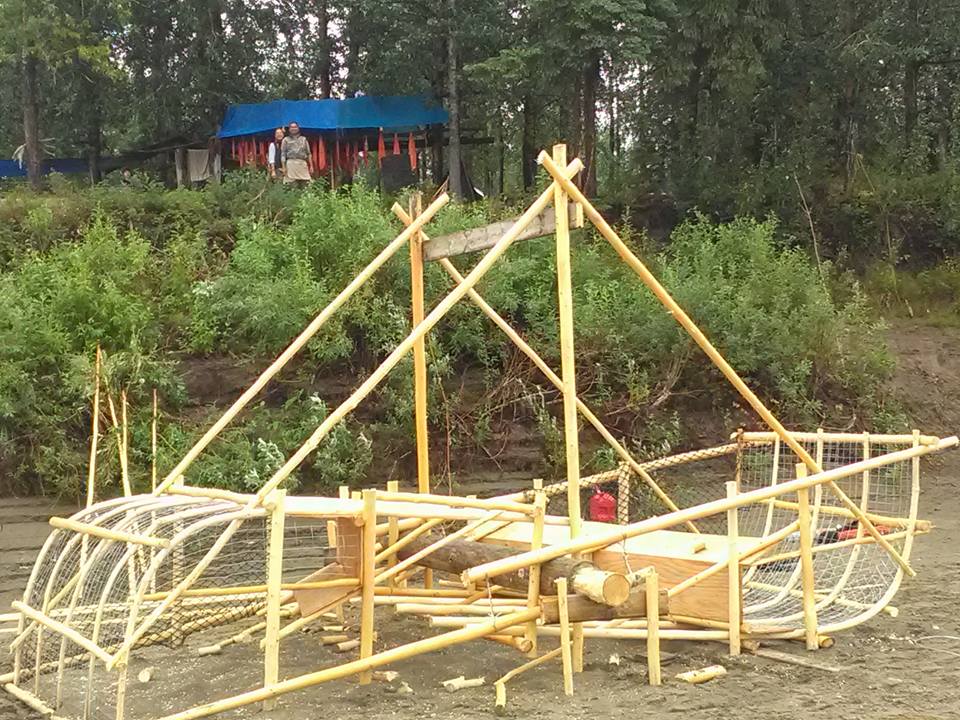Charlie Wright, Sr. relates the story of when the first fish wheel was constructed on the bend of the Yukon River where the village of Rampart rests, deep in Alaska’s Interior. Wright’s great grandfather, Al “Cap” Mayo, carried the spruce poles and other materials down to the shore and started assembling the contraption while villagers laughed at him. They wondered, how could that device possibly catch salmon better than the fish fences and traps that they used, or the nets that they wove from whatever materials they could gather? But once Mayo’s fish wheel started scooping salmon from the mighty river, the Koyukon Athabaskan villagers were quickly convinced of the gear’s efficiency. The Rampart region of the Yukon River became fish wheel country.
Cap Mayo might have been accustomed to making people laugh well before making that first fish wheel in the area, having spent his youth as a circus performer before heading to the North. Mayo travelled through Canada, entering Alaska territory via the Yukon River. Beginning in the 1880s, Mayo and his partners Jack McQuesten (of Yukon Jack fame) and Arthur Harper worked as fur traders, store operators, and prospectors from Tanana in Alaska’s interior to Fort Selkirk in Yukon Territory. All three men married Koyukon women. Mayo ran the trading post at Tanana beginning in 1894, with his wife Margaret (Neehunilthnoh).
Mayo, who is the namesake of the village in Yukon Territory, died in 1924, well after fish wheels had become a part of life in the Rampart region. Mayo’s great grandson Wright recalls how the sound of the fish wheel permeated his dreams as a child. “On a calm night, the big kings would be banging in the fish wheel box across the river, and they were so large that the sound would wake us up,” he remembers. A man of slight stature couldn’t help but drag the tale of those huge kings on the ground while carrying them, Wright contends, while today Wright can carry three in one hand, like one would carry silver salmon.
Every year of his youth, Wright worked with his family to harvest young spruce trees, turn them into poles, and then steam bend the poles to prepare for the construction of new fish wheels. Back then, the village didn’t have the heavy equipment required to pull the wheels from the river at the end of the season, so they often lasted just a year, providing Wright with plenty of construction practice. He remembers fish camps every ten miles along the river, full of families operating fish wheels alongside racks of scarlet-hued dried salmon.
Eventually, gillnets began to replace fish wheels as the gear of choice, and knowledge of fish wheel construction began to wane. Moreover, chinook returns became such that even subsistence fishing in the region is curtailed. Prompted both by poor chinook returns, obligations to the Pacific Salmon Treaty and Yukon River Salmon Agreement, and a desire to pass the tradition of fish wheels on to the next generation, Wright is partnering with others to resuscitate fish wheels while modifying them to fit new needs.
One of Wright's fish wheels, under construction. Photo courtesy Charlie Wright.
Wright creates “fish friendly” fish wheels, utilizing soft mesh for the baskets and adding padding to the chute. The salmon travel down this chute to reach a box from which the fish are plucked. The kind of fish wheel that Wright builds doesn’t injure salmon to the extent of typically-constructed fish wheels, helping off-limit species (like kings) to return to the water with a greater chance of survival. These modified fish wheels are particularly friendly to Canada-bound fish, Wright contends, since the fish wheels are set along the banks of the river rather than jutting out towards the center, as gillnets do. He explains that the middle of the river is a fish super highway, destined for Canadian spawning grounds, while fish destined for local tributaries cling to the side. Consequently, these fish friendly fish wheels can help Alaska to respect treaty obligations and enhance returns to Canada, hopefully allowing for more fishing opportunities along the Alaska stretch of the Yukon.
Wright sees returning to traditional fishing methods along the Yukon as a chance to enhance Chinook returns and ensure cultural survival. This summer, Wright has taught youth to build a fish friendly fish wheel in Stevens Village. “It’s feeding many, many families now,” he reports. He also worked with the Tanana Chief Council’s recent Spirit Camp to teach fish wheel construction to kids at camp. The Tanana Native Council has teamed with Tanana Chief Council to extend camps to other villages with the aim of promoting traditional cultural knowledge. If Wright has his way, the legacy of his great grandfather’s fish wheels will persist, the Rampart region will be fish wheel country again, and chinooks as large as one can imagine will bang in fish boxes, waking up a new generation of fishermen.

